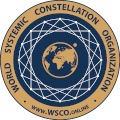Leo Angart
"Constellation Master Trainer, WSCO"
- www.vision-training.com
- Member since Jan 1, 2001
- Country China
Leo Angart
"Constellation Master Trainer, WSCO"
Please pick your specialization
About Leo Angart
Brain Plasticity and Vision Training
You may or may not have heard of the term “brain plasticity”. It is an extraordinary biological phenomenon that encompasses our brain’s ability to modify its own structure and function following the changes within the body or in the external environment. The word “plasticity” is derived from the Greek word “plastos” which means molded. It seems the more we uncover about the most complex organ of the body, the more surreal it gets.
The nature of neural plasticity
Without the brain plasticity or neuroplasticity, our brain would not be able to modify its connection to re-wire itself. Hence, the brain would have never been able to develop from infancy. The brain is often analogized with the computer, but unlike computers, the brain is special in its ability to process sensory and motor signals in parallel. Additionally, there are plenty of neural pathways for a particular outcome and this is significantly helpful in correcting temporary loss of function through damage, since signals can be re-routed. When someone starts practicing a musical instrument or any other activity for that matter, they get better with practice because the brain forges new, shorter and more efficient neural pathways to send the impulse that will bring your fingers to move correctly so you hit the right note in time.
The nature of neural plasticity
Changes in behavior have been tied to changes in the organization or the properties of the neural circuitry and there are plenty of researches to validate this fact. Our experience can either modify existing circuits or generate new ones. Both of these processes are paramount in our ability to learn. Our brain is comprised of interconnected neurons. Each neuron connects with a subset of other neurons. The places where plastic changes evidently occur are the synapses – junctions between neurons where impulses can travel along a number of pathways. Particularly, the synapses of the region of brain that deals with the skills required for the activity you are doing. For learning and memory functions, it is the limbic system deep inside the medial temporal lobe and for movement, and for balance, it is the cerebellum. At birth, infants have an estimated 2500 synapses and by the time they reach the age of three, the number of synapses per neuron increases to about 15000 as the infant learns new skills and explores the world around, thanks to synaptogenesis.
Vision training works through neural plasticity
When you have to memorize something, repetition can help you remember it through the structural and biochemical changes that take place in the brain because of the stimulus provided by repetition. Repetition reinforces certain neural pathways to help the retrieval of stored information from long term memory. Our brain runs all tissues and organs of our body. The adult brain is capable of correcting damaged function by reinforcing the damaged or abnormal neural pathways through the same mechanism. An enriched and stimulating environment can lead to recovery and restore function. Vision training movement has been successful in rehabilitating the patients of myopia, presbyopia and other visual defects through a set of corrective eye movement exercises. These exercises and vision workouts help restore proper function to the muscles that contribute to the eye’s movement.
"Long interested in investigating the seemingly far-fetched claims people have made that vision could be improved naturally, without glasses. I attended Leo Angart’s course, in which he puts the principles in this book into action. To my amazement, by doing the exercises over the several days of the course, my wife and I both found that we needed, between the four eyes, about 3/4 of a diopter less prescription correction per eye."
"Both of us, who had been requiring increased prescriptions every couple of years, were now able to return to the prescriptions of several years before (about a diopter less per eye) and spend more time wearing no glasses at all within a few days. As important, we learned that some of the factors that make it hard for many of us to see clearly, also put long term pressure on the eyes, setting them up for more serious problems in old age. Thus, some of the exercises Leo describes here not only improve eight, but also appear to protect our eyes over the course of our lives."
Norman Doidge, MD, author of The Brain That Changes Itself.
Leo Angart
www.vision-training.com
